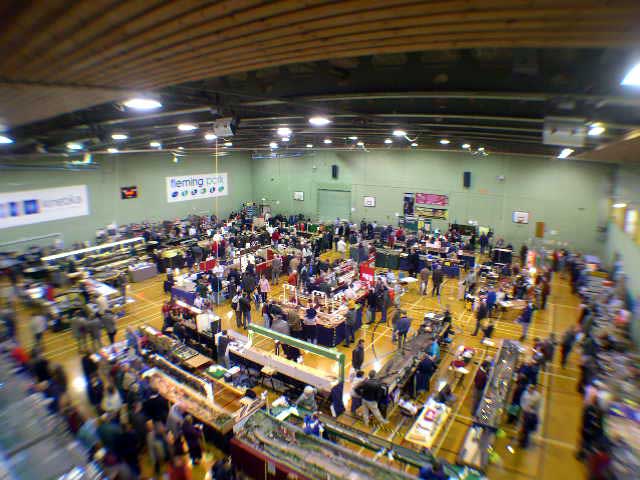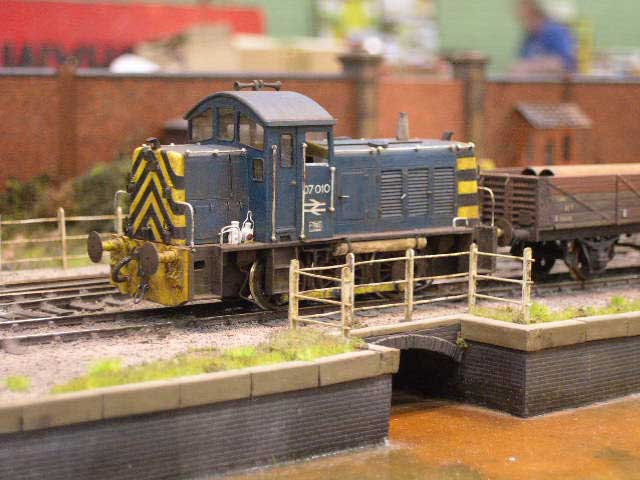Eastleigh, Hampshire (UK)

| Eurotrack 2004 |
| Fleming Park Leisure Center, Eastleigh, Hampshire (UK) |
| February 28th/29th, 2004 |
 |
| Special Report |
| Text & pictures copyright © 2004 by Ian How |
Click on pictures to enlarge.Text in italic is extracted from the Exhibition Guide 2004.
| [N] - Sharkfin Yard | ||
 |
 |
|
Shark Fin yard is scenically based on locations in the Sonorah Desert, South West USA, where temperatures can exceed 48 degrees Celsius (120F) and surfaces can reach 82C (180F). People don’t stand out in the sun here and even the trains don’t hang around long. Some diesels can’t even stand still because of air conditioning problems and you may see them shuttling from one end of the yard to the other to keep cool. The buildings are of bright aluminium to reflect as much heat as possible. The layout is a “Micro Layout” of the type popularised by Model Rail International Magazine. The track plan owes much to the work of Carl Arendt, Jack Trollope and others published in MRI but also on the Internet at: http://carendt.com/ " | ||
| [EM] Canada Road / [EM] Weston-super-Mare | |||||
 |
 |
||||
The WC&PLR’s rolling stock was quirky to say the least and generally comprised run down, second hand equipment, bought cheaply from other railways, some of which were also run by Col Stephens. There were a few notable exceptions, such as the infamous ‘American’ coaches. My layout depicts the Ashcombe Road terminus in Weston-super-Mare as it was in the mid 1930s before the south side of the line was developed. Baseboards are built from plywood and trackwork is hand built, comprising code 60 flat bottomed rail soldered to copper clad sleepers/concrete pots, laid over a foam camping mat base and ballasted with granulated cork. Stock is a mixture of kit built and scratch built items. More locomotives and coaches are presently being built. With the exception of the station, all other buildings remain today and the track bed is a cycle path. "
| |||||
| Home > Smrg > Eurotrack 2004 | ||
| Created March 14th, 2004. | ||
| Text and pictures copyright ©2004 by Ian How and respective Exhibition Guide writeups authors. Web Hosting and page layout by Frédéric Delaitre. | ||